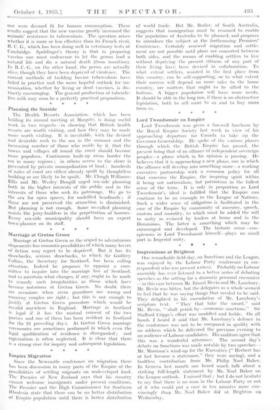pr. Spahlinger's Success It is to be hoped that Mr.
Walter Elliot will decide-on official tests of the Spahlinger cattle vaccine in view of the success announced by the Northern Ireland Ministry of Agriculture. Of 18 calves 11 were treated with De. Spahlinger's new " simplified vaccine," while 7 were not. Six months later all 18 were injected with 100 million living tubercle bacilli, a dose calculated to kill them in a couple of months. Of the 7 unprotected calves 5 were dead within seventy-three days while 2 recovered after a month's fever. Of the 11 protected by the vaccine none showed fever after the tenth day and only one died of tuberculosis. The surviving 10 withstood. natural infec- tion for two years and when they were slaughtered all. but one were deemed fit for human consumption. These results suggest that the new vaccine greatly increased the animals' resistance to tuberculosis. The question arises whether it is more or less effective than its French rival, E. C. G., which has been doing well in veterinary tests at Cambridge. Spahlinger's theory is that in preparing Vaccine one must endeavour to let the germs lead a natural life and die a natural death (from inanition). In B. C. G., on the other hand, the germs are actually Alive, though they have been deprived of virulence. The t'urrent methods of tackling bovine tuberculosis have failed in practice and the more hopeful outlook for im- munisation, whether by living or dead vaccines, is dis- tinctly encouraging. The general production of tubercle= free milk may soon be a perfectly practical proposition.











































 Previous page
Previous page